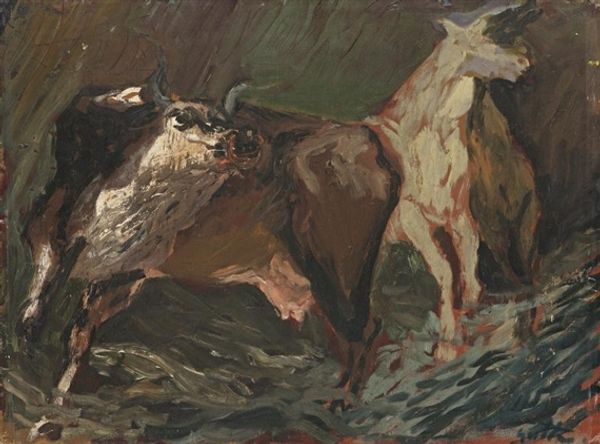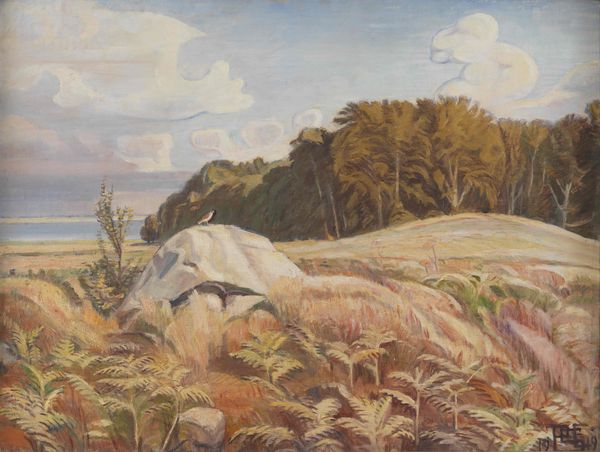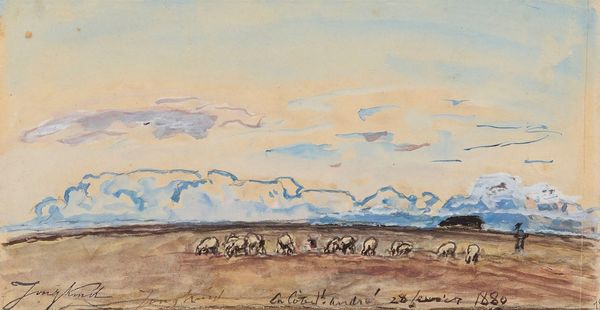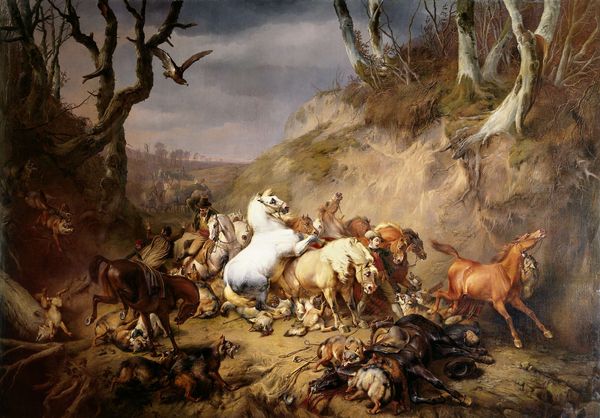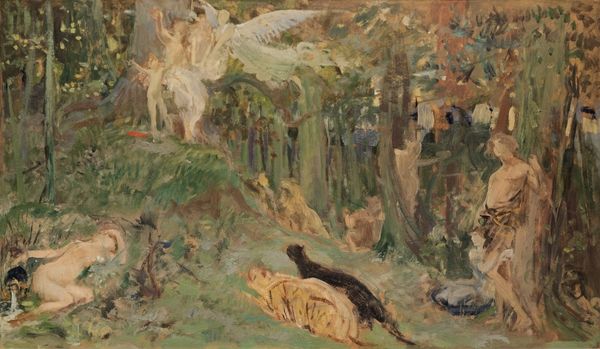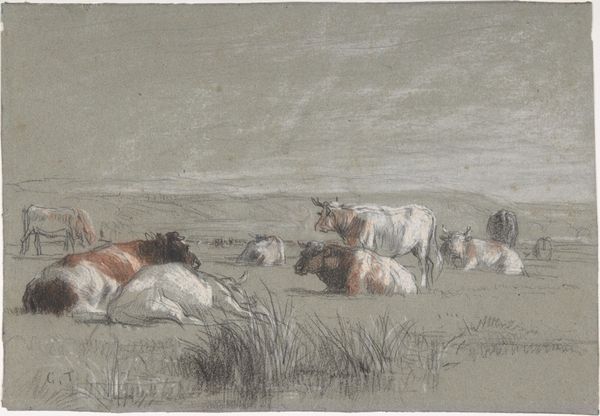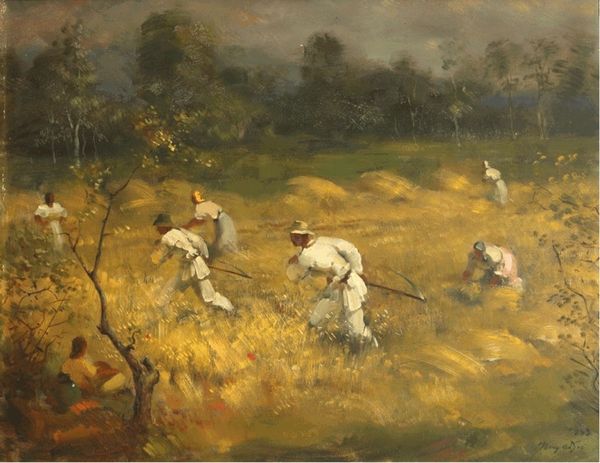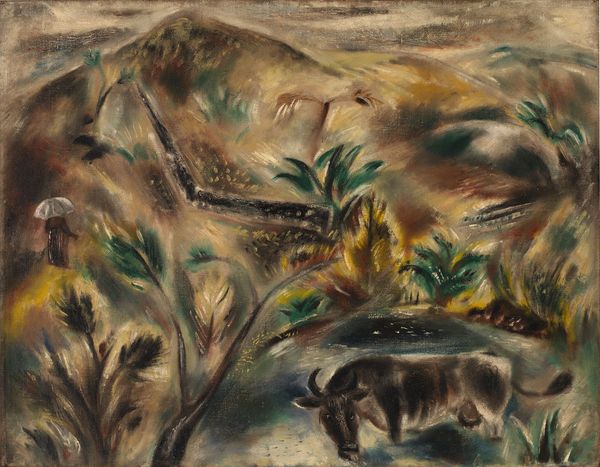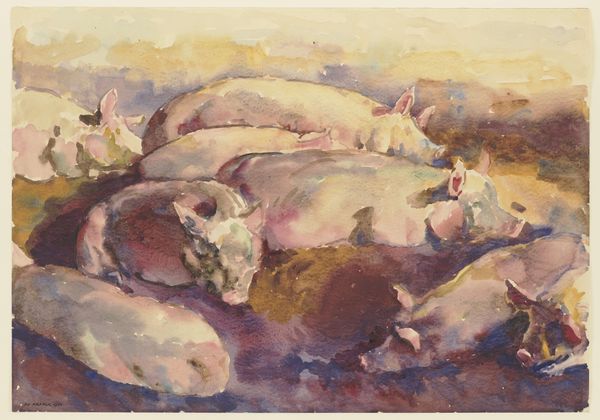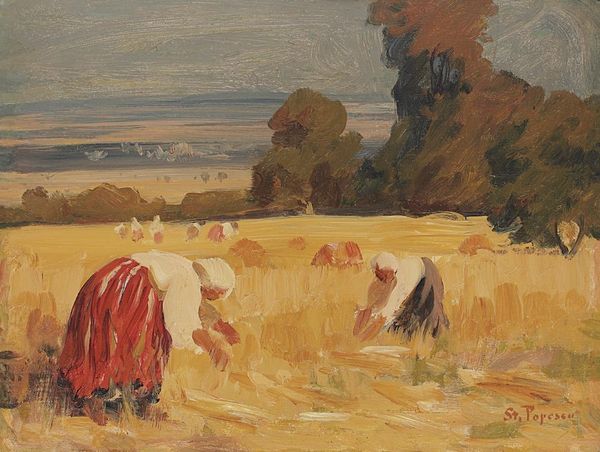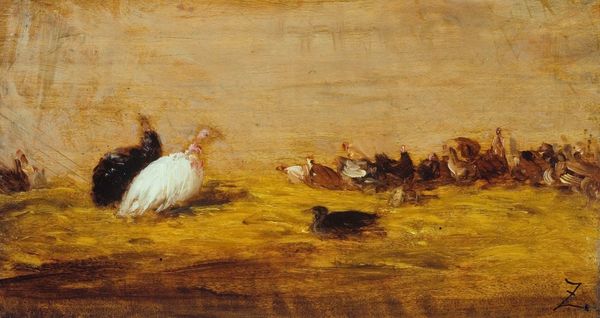
watercolor
#
animal
#
impressionism
#
landscape
#
oil painting
#
watercolor
#
watercolour illustration
#
watercolor
#
realism
Copyright: Public Domain: Artvee
Editor: So, here we have Archibald Thorburn's watercolor, "Blackcock In A Field." I am struck by how it blends a seemingly simple, naturalistic scene with what seems to me like a careful observation of the birds in their environment. What do you see in this piece? Curator: I see a fascinating intersection of representation and power dynamics. We need to ask ourselves about the cultural context of a work like this. Thorburn lived in a period when land ownership and hunting were deeply connected to class and gender. Who was entitled to "observe" this scene, and with what implications? Editor: Interesting. I hadn't considered that. Are you suggesting that the image isn't just a neutral depiction of nature? Curator: Precisely. This watercolour is more than meets the eye. Consider how these animals were seen during that period in the context of blood sport. Was Thorburn simply documenting the hunt or engaging in something more critical? What about the position of the blackcock; is it about to be hunted, and by whom? This all plays into colonialist attitudes toward nature. Editor: It’s a bit unsettling to think of this painting as being associated with larger systemic structures. The animals just seem so… well, innocent. Curator: But innocence itself can be a loaded concept! The representation of the “natural world” is intertwined with cultural ideas about purity, control, and even exploitation. How does that impact your reading now? Editor: It gives me a lot to think about – this art can be much more charged than initially meets the eye. I definitely am seeing this work and other like it with a renewed sense of caution and skepticism, especially as it relates to art’s broader, even unintentional cultural implications. Curator: Absolutely. Art can be a powerful lens for examining broader social inequalities. By looking at Thorburn's image critically, we hopefully open our minds to many possibilities about our own beliefs, and others in the context of place, race, and social mores.
Comments
No comments
Be the first to comment and join the conversation on the ultimate creative platform.
